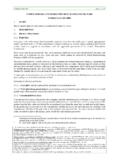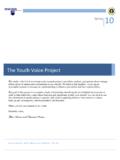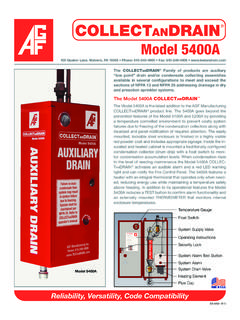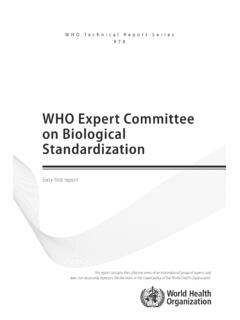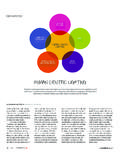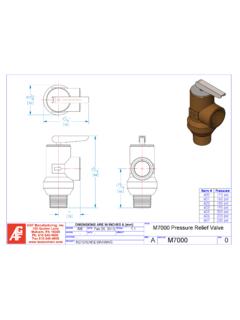Transcription of Data Quality and the Origin of ALCOA - southernsqa.org
1 The Compass Summer 2010 Newsletter of the Southern Regional Chapter Society or Quality Assurance data Quality and the Origin of ALCOA Stan W. Woollen Senior Compliance Advisor Stan Woollen and Associates If one does a Google search on the term ALCOA , virtually all of the hits lead to ALCOA Inc. According to the company s homepage, ALCOA Inc. is among the world's top producers of alumina and aluminum. Its vertically integrated operations include bauxite mining, alumina refining, and aluminum smelting; primary products include alumina and its chemicals, automotive components, and sheet aluminum for beverage cans . Gasp!! Not one reference to data Quality . With all due respect to ALCOA Inc., which I m sure is justifiably quite proud of the Quality of its products, ALCOA , in the context of this article, is an acronym which has nothing, or almost nothing, to do with ALCOA Inc.
2 Many seasoned QA professionals, have heard of ALCOA used as an acronym to identify the elements of data Quality . This acronym stands for Attributable, Legible, Contemporaneous, Original and Accurate. The extent to which data possess these qualities determines its level of Quality and thus fitness for use, particularly with respect to use for regulatory purposes. How did the ALCOA acronym come to be used in the context of data Quality ? Where did these elements of data Quality , for which ALCOA stands, originate? The purpose of this article is to shed some light on these two questions. The answer to the first question of how the ALCOA acronym came to be used in the context of data Quality is it bit obscure, so I ll address that first. The ALCOA acronym was first coined by me while serving in FDA s Office of Enforcement back in the early 1990 s. Exactly when I first used the acronym I don t remember, but I do remember why and how it came to be.
3 Prior to coming to the Office of Enforcement, I served 15 years as an investigator in FDA s field office covering the Washington DC Metro area. As a regional expert investigator, and later as a supervisory investigator, my duties included occasionally, making presentations to FDA s external constituents and serving as an instructor at FDA s internal training seminars and schools. However, public speaking was just a small part of my job in the field, and not necessarily my favorite part. When I transferred to the Office of Enforcement in FDA headquarters, public speaking was to become a much bigger part of my job and remained so during the next 14 years in various headquarters offices. The Compass Summer 2010 Newsletter of the Southern Regional Chapter Society or Quality Assurance When I first came to the Office of Enforcement, Dr. Paul Lepore was the Agency s Bioresearch Monitoring (BIMO) Program Coordinator.
4 I came to headquarters as the Associate BIMO Program Coordinator, working with Dr. Lepore. For those readers who don t know who Paul Lepore is, you ll see his name listed prominently as the FDA contact for the GLPs in Federal Register notices announcing the final GLP regulations in 1978. Indeed, Dr. Lepore was a principal architect of the GLP regulations and for many years served as the agency s lead authority on the interpretation and application of GLPs. In that capacity, he of course spent considerable time making numerous presentations. He had years of experience speaking publically on all aspects of GLPs and was quite an accomplished speaker. As fate would have it, shortly after I came to the Office of Enforcement, Dr. Lepore took advantage of a rare opportunity to retire early from FDA. After only a year as the Associate BIMO Program coordinator, I was immediately thrust into his former role as the Agency BIMO program coordinator and took over all of his responsibilities including serving as an agency spokesman for GLPs and FDA s overall BIMO program.
5 Facing the prospect of a great deal of public speaking; panic set in. After years of field experience implementing the BIMO program, I had the technical knowledge and experience with the GLPs and GCPs, but I didn t have Dr. Lepore s speaking experience. I needed to brush up on my public speaking skills immediately. This included coming up with ways to remember and speak on a variety of topics extemporaneously. I used a number of techniques to help me easily remember and organize my thoughts. One of the techniques I used was to come up with acronyms that I could easily remember to help me organize my presentations. This is where the acronym ALCOA came in. Admittedly, this acronym was easy for me to remember, because ALCOA Inc. was a commonly known company name. On the other hand, the ALCOA acronym was not known in the context of data Quality . Ordinarily I didn t use acronyms in the actual body of my presentations.
6 However, in preparing slides for one presentation, I ran out of space on a slide, and just inserted the acronym ALCOA as a bullet-point reminder to myself. I don t remember exactly when, or in which presentation I first used the actual ALCOA acronym. However, I do remember the consternation of at least one member of the audience, who in trying to later decipher the government jargon in my slide, asked what ALCOA stood for. I had to explain what ALCOA stood for on many occasions. Consequently, the acronym eventually became known in the QA community to such an extent; I could use the ALCOA acronym alone on my slides as a concise and lazy way to discuss the elements of data Quality . This is how and why the ALCOA acronym originated in the context of data Quality . While I did coin the ALCOA acronym for the elements of data Quality , I take no credit whatsoever for the origination of the actual elements of data Quality for which ALCOA The Compass Summer 2010 Newsletter of the Southern Regional Chapter Society or Quality Assurance stands.
7 This leads to the second question in this article of where did the elements of data Quality originate? The answer to the question is a little complex because the elements of data Quality have their origins in a number of FDA s Quality systems regulations. Though not originally referred to as such, Quality systems regulations have been around for quite sometime at FDA. The earliest of FDA s Quality systems regulations include Current Good Manufacturing Practice Regulations (cGMPs) for drugs, biologics, and later, Good Laboratory Practice regulations (GLP) and GMPs for medical devices. Virtually all of these Quality system regulations articulate one or more of FDA requirements for data Quality covered by the ALCOA acronym. Although the cGMPs articulate a number of the expectations for data Quality , the GLP regulations, in my opinion, are the first FDA regulations which bring the ALCOA elements of data Quality together in a comprehensive fashion.
8 For this reason, this article will focus on the GLP requirements pertaining to data Quality elements, particularly 21 CFR (e) which articulates virtually all the elements of ALCOA . The first A in ALCOA stands for Attributable. Simply put, FDA expects data to be linked to its source. It should be attributable to the individual who observed and recorded the data , as well as traceable to the source of the data itself. ( study, test system, analytical run, etc.) The applicable GLP requirements pertaining to attribution of data are found in 21 CFR (c) and (e). The requirement for attribution of data to the individual who collected it is found in 58. 130(e). According to the regulation, All data entries shall be dated on the date of entry and signed or initialed by the person entering the data . The same is true for automated data . The regulation states, .. In automated data collection systems, the individual responsible for direct data input shall be identified at the time of data input.
9 Not only does this concept of attribution apply to the collection of original data but also to any changes made to the data . Changes made to data must be signed and dated by the individual making the changes. An example of a requirement for attribution of data to its source, is illustrated by 21 CFR (c) which requires study specimens to be identified by test system, study, nature, and date of collection. The L in ALCOA stands for Legible. Quality data must also be legible if it is to be considered fit for use. The concept of legibility means that data are readable. This of course implies that data must be recorded permanently in a durable medium ( pen and ink on paper). 21 CFR (e) addresses this directly by requiring that, data shall be recorded directly, promptly, and legibly in ink . The concept of legibility of data also extends to changes made to data . For example, (e) requires that changes be made so as not to obscure the original entry, thereby maintaining its legibility.
10 The Compass Summer 2010 Newsletter of the Southern Regional Chapter Society or Quality Assurance The requirements for legibility of electronic data may present technical challenges and take on new meaning, with respect to recording data permanently on a durable medium. However, the underlying concept of legibility/readability is the same. If one consults FDA s Electronic Record; Electronic Signature rule (21 CFR 11), many of the traditional ALCOA data Quality elements are addressed. For example, with respect to legibility of data , 21 CFR (b) requires that compliant electronic systems have, The ability to generate accurate and complete copies of records in both human readable and electronic form suitable for inspection, review, and copying by the agency. This requirement clearly establishes the expectation that electronic data must be readable ( legible). The C in ALCOA stands for Contemporaneous.

